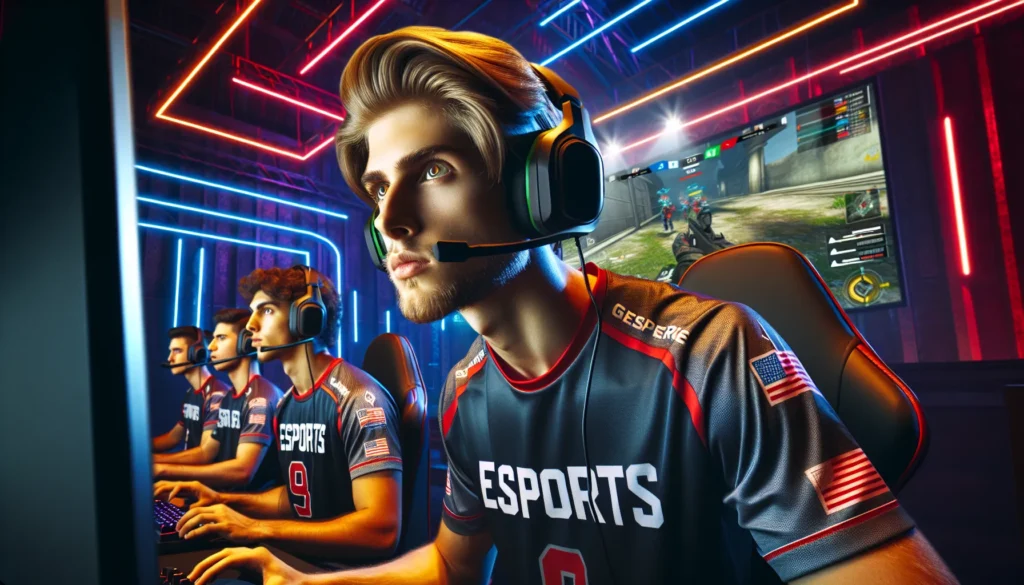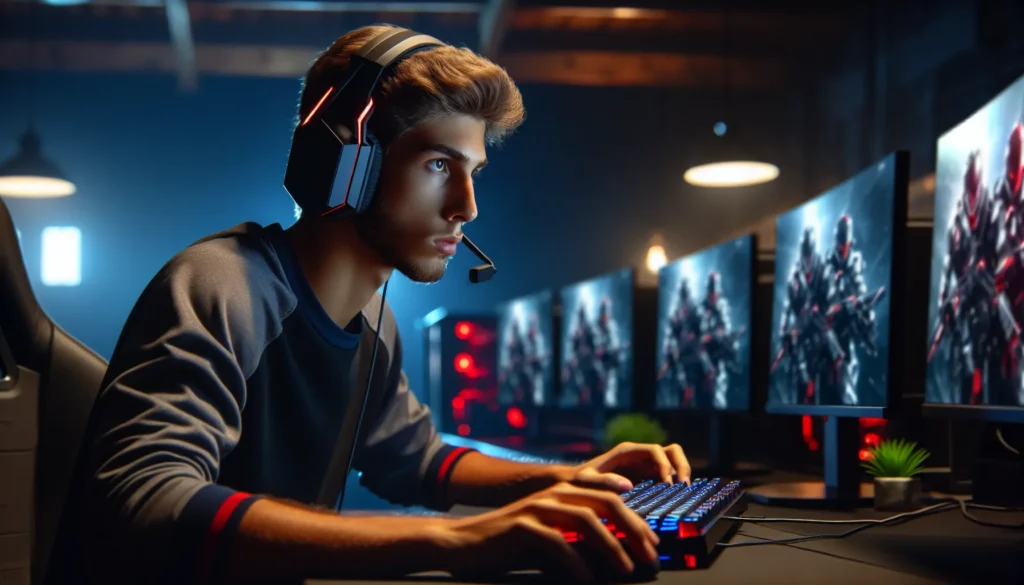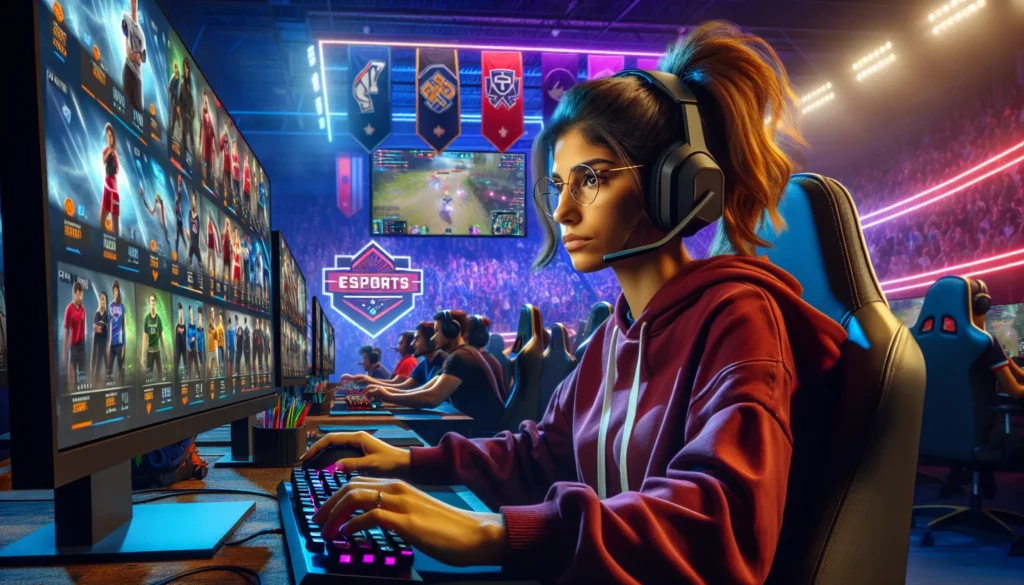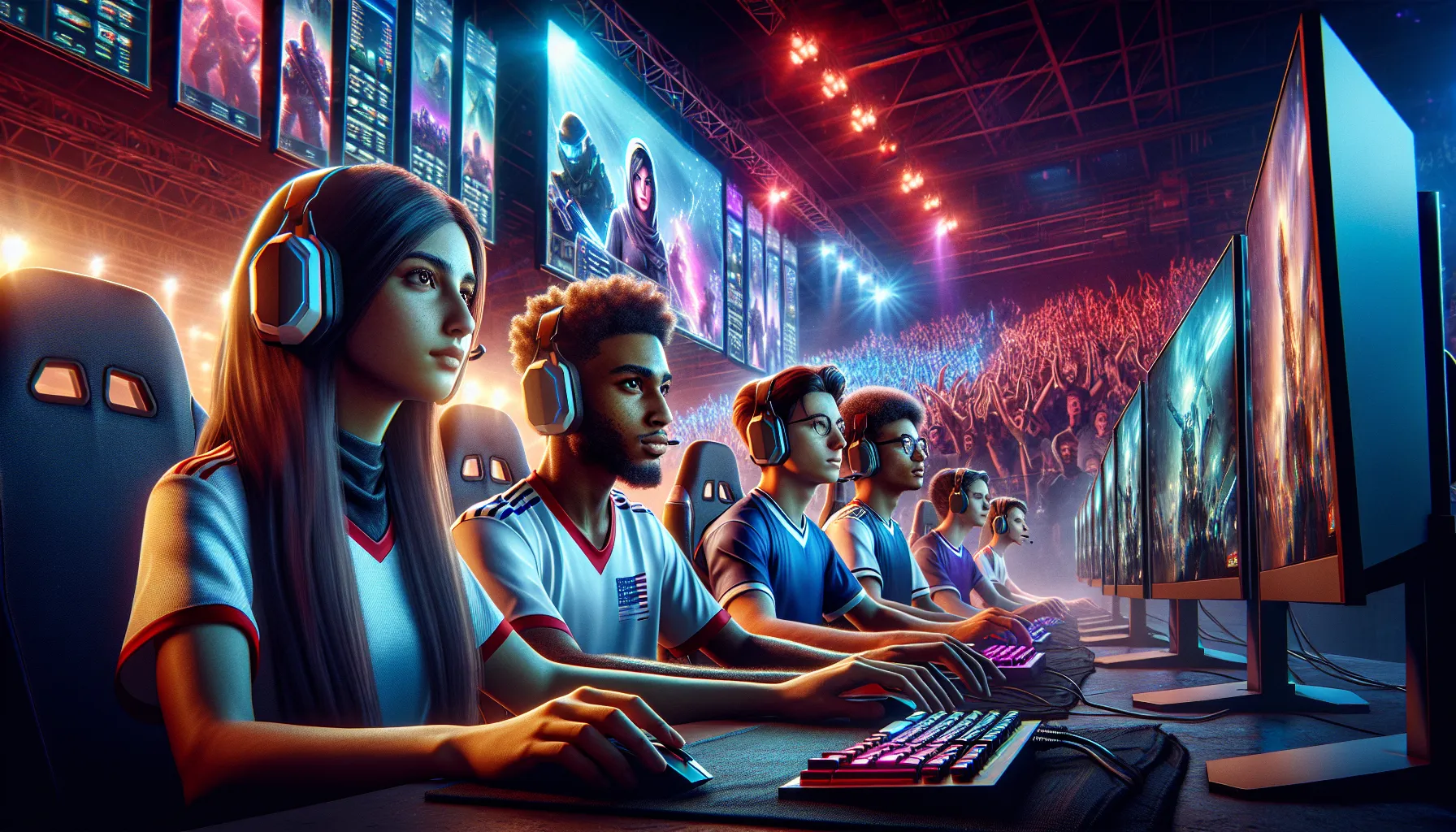Key Takeaways
- Esports meets core sport criteria—rules, competition, skill, measurement, governance, and ethics—supporting a qualified “yes” to the question: is esports a sport.
- Physical intensity is the main caveat: esports demands high cognitive and motor skill under stress but typically falls below moderate MET thresholds of traditional sports.
- Governance remains complex: publisher control over rules and formats limits federation-style autonomy, slowing Olympic inclusion and broad policy recognition.
- Elite esports mirrors athletic systems with structured training, coaching, periodization, injury prevention, and performance analytics.
- Recognition is rising: Asian Games medal events and the IOC’s Olympic Esports initiatives signal growing legitimacy, even as violent titles and IP issues complicate pathways.
I grew up watching stadiums roar for football and now I see arenas light up for gamers. The same energy hits me every time. So I keep asking the big question. Is esports a sport
I see athletes train their bodies and minds. I also see players grind for hours sharpen reflexes and master strategy. Both chase victory under pressure in front of fans who care a lot.
In this piece I’ll explore what makes something a sport. I’ll look at skill competition and physical demand. I’ll share why I think esports belongs in the conversation and where it might fall short. Let’s press start and find out together.
What Defines A Sport
I define sport by looking at shared features across organized activities. I focus on rules, competition, skill, physicality, and governance to keep the frame consistent.
Core Criteria Used By Sports Bodies
- Rules: Sports use codified rules that standardize play and eligibility across events and venues, per the European Sports Charter and international federations (Council of Europe, https://www.coe.int/en/web/sport/european-sports-charter).
- Competition: Sports stage structured contests that produce measurable outcomes across leagues and tournaments, per the Olympic movement’s event frameworks (IOC, https://olympics.com/ioc).
- Skill: Sports demand trainable proficiency under pressure across tactics and execution, per long‑standing federation standards (SportAccord, archived criteria, https://web.archive.org/web/20160506165031/http://www.sportaccord.com/about/membership-application-criteria).
- Physicality: Sports involve physical activity that engages body systems across coordination and exertion, per the European Sports Charter’s scope for physical activity (Council of Europe, https://www.coe.int/en/web/sport/european-sports-charter).
- Measurement: Sports rely on objective scoring or timing that enables rankings across heats and matches, per international competition formats (IOC, https://olympics.com/ioc).
- Governance: Sports operate under recognized bodies that enforce integrity across anti‑doping and conduct, per the World Anti‑Doping Code and federation statutes (WADA, https://www.wada-ama.org/en/what-we-do/the-code).
- Ethics: Sports exclude activities that primarily harm participants or animals across practice and competition, per SportAccord’s admission principles (SportAccord, archived criteria, https://web.archive.org/web/20160506165031/http://www.sportaccord.com/about/membership-application-criteria).
Where Esports Fits These Criteria
- Rules: Esports titles use formal rulebooks that define patches, formats, and eligibility across leagues and majors, with publisher and tournament oversight in games like League of Legends and Counter‑Strike (IOC Esports, https://olympics.com/ioc/esports).
- Competition: Esports runs tiered circuits that crown champions across splits and international finals, with brackets and seeding based on prior results (IOC Esports, https://olympics.com/ioc/esports).
- Skill: Esports competition hinges on trainable mechanics and strategy across aim, actions per minute, and decision cycles, validated by performance analytics and coaching standards (IOC Esports, https://olympics.com/ioc/esports).
- Physicality: Esports performance depends on motor control and physiological arousal across hand‑eye coordination and sustained attention, though the level of gross exertion varies by title and format (Council of Europe, https://www.coe.int/en/web/sport/european-sports-charter).
- Measurement: Esports uses objective metrics that determine outcomes across kills, rounds, maps, and time, with real‑time officiating and reviews for disputes (IOC Esports, https://olympics.com/ioc/esports).
- Governance: Esports governance spans publisher policies and event organizers across integrity, anti‑cheat, and player conduct, with emerging alignment to sport integrity frameworks and doping controls at select events (WADA, https://www.wada-ama.org/en/what-we-do/the-code).
- Ethics: Esports competition avoids animal harm and focuses on digital interaction across virtual environments, aligning to SportAccord’s non‑harm principle for recognized activities (SportAccord, archived criteria, https://web.archive.org/web/20160506165031/http://www.sportaccord.com/about/membership-application-criteria).
The Case For Esports As A Sport

I see the sport debate resolve when evidence covers skill, structure, and strain. I stack that evidence where credible bodies already track it.
Skill, Strategy, And Team Dynamics
I treat elite esports skill as measurable performance under constraints from game rules. I point to reaction time, precision, and multitasking that decide outcomes in titles like League of Legends, Dota 2, and Valorant. Researchers map core demands across perception, decision speed, and motor execution in professional play, including sustained attention and working memory under pressure [Frontiers in Psychology, 2020].
- Skill anchors on mechanical execution, for example crosshair control, tracking, and ability rotations.
- Strategy hinges on macro planning, for example draft choices, objective trading, and resource timing.
- Teamwork depends on role clarity, for example shotcalling, support utility, and space creation.
- Communication compresses information, for example cooldown windows, enemy vision, and setup cues.
- Decision‑making integrates risk, for example contest calls, tempo pushes, and map swaps.
I cite outcomes that confirm sportlike parity. StarCraft II professionals sustain hundreds of context actions in short bursts, and MOBA professionals reliably convert objective control to win probability through repeatable patterns that analysts quantify in event data [Frontiers in Psychology, 2020].
Training, Coaching, And Discipline
I practice under periodized plans that mirror sport science. University programs and pro teams use structured schedules, staffed roles, and performance reviews across scrims, VOD review, and aim drills [UCI Esports, 2024]. The IOC Medical and Scientific Commission documents workload management needs in esports, covering sleep, nutrition, and overuse injury prevention in the same framework applied in traditional sport [IOC Consensus, 2023].
- Coaching scopes include head coach, analyst, position coach, and sport psychologist, for example macro planning, opponent prep, and focus protocols.
- Practice blocks include mechanical drills, team scrims, and review sessions, for example motion tracking, set plays, and error tagging.
- Discipline routines include warmups, cooldowns, and recovery, for example mobility work, eye breaks, and wrist care.
I reinforce that high performance links to consistent habits. I monitor heart rate, posture, and wrist load with wearables and ergonomic setups when sessions extend across multiple scrim blocks [IOC Consensus, 2023].
Formal Competition And Governance
I compete under codified rules, neutral formats, and third‑party oversight. Publishers set core rulebooks per title, and tournament operators enforce competitive integrity with anti‑cheat, match officials, and sanctions, for example ESL FACEIT Group, Riot Games Esports, and BLAST [Riot Global Rule Set, 2024] [ESL Rulebook, 2024]. Major multi‑sport bodies now stage esports events, including medal status at the 19th Asian Games in Hangzhou across 7 titles [Hangzhou 2022, 2023], and the Olympic Esports Week in Singapore under IOC coordination [IOC, 2023].
- Governance layers include publisher rules, event operator policies, and federation guidelines, for example IESF codes, doping controls, and player eligibility.
- Integrity systems include identity checks, competitive patches, and live officiating, for example anti‑cheat clients, pause protocols, and penalty matrices.
- Dispute pathways include protest windows, review panels, and appeals, for example competitive rulings, competitive reinstatement, and fines.
I track the same spectator and media markers used in sport. League of Legends Worlds 2023 passed 6 million peak concurrent viewers across verified platforms under independent auditing [Esports Charts, 2023].
| Metric | Figure | Context | Source |
|---|---|---|---|
| Peak concurrent viewers | 6,400,000+ | LoL Worlds 2023 | Esports Charts, 2023 |
| Medal events count | 7 | Asian Games Hangzhou | Hangzhou 2022, 2023 |
| Heart rate under match stress | 160–180 bpm | Pro player testing | German Sport University Cologne, 2016 |
- Frontiers in Psychology, Pedraza‑Ramirez et al, 2020, Towards a neurocognitive model of esports performance
- IOC Medical and Scientific Commission, 2023, Esports and gaming consensus framework
- UCI Esports, 2024, Program structure and training resources
- Riot Games, 2024, Global Competition Rules
- ESL FACEIT Group, 2024, ESL Pro Tour Rulebook and Anti‑Doping Policy
- Hangzhou 2022 Asian Games, 2023, Esports medal events
- International Olympic Committee, 2023, Olympic Esports Week
- Esports Charts, 2023, Worlds 2023 peak viewership
- German Sport University Cologne, 2016, Physiological responses in esports players
The Case Against

I focus on the most cited objections in sport science and governance. I contrast esports performance with established sport norms, then I track perception and tradition signals.
Physical Exertion And Athleticism Debates
I anchor the athleticism debate in intensity thresholds used in exercise science. I classify moderate intensity at 3.0–5.9 METs and vigorous intensity at 6.0+ METs, per ACSM and the Compendium of Physical Activities, while typical seated video gameplay sits near 1.3–2.0 METs, below sport benchmarks (Ainsworth et al., 2011, 2020 update; ACSM Guidelines, 2021; WHO, 2020).
I compare indicative intensity values across activities that frame “is esports a sport” debates.
| Activity | Indicative METs | Source |
|---|---|---|
| Esports, seated PC gameplay | 1.3–2.0 | Ainsworth Compendium 2011, 2020 update; DiFrancisco-Donoghue et al., BMJ Open SEM 2019 |
| Walking, 3 mph | 3.3 | Ainsworth Compendium 2011 |
| Badminton, casual | 4.5 | Ainsworth Compendium 2011 |
| Soccer, competitive match play | 7.0–10.0 | Ainsworth Compendium 2011 |
| Basketball, game play | 6.5–9.5 | Ainsworth Compendium 2011 |
I note that heart rate rises during high-stakes esports, yet energy expenditure remains low, which places esports below moderate-intensity sport despite cognitive load and stress biomarkers (DiFrancisco-Donoghue et al., 2019, https://bmjopensem.bmj.com/content/5/1/e000467). I add that the dominant injury profile reflects sedentary demands, not locomotor performance, with reports of wrist and elbow tendinopathies, back pain, and vision strain rather than aerobic or plyometric adaptations (DiFrancisco-Donoghue et al., 2019).
I separate motor skill from athletic capacity in the “is esports a sport” question, since fine motor control and decision speed score highly in esports, while aerobic fitness, strength, and agility underperform sport norms that national bodies use in talent pathways and return-to-play protocols (ACSM Guidelines, 2021; WHO Guidelines on Physical Activity, 2020, https://www.who.int/publications/i/item/9789240015128).
Tradition, Spectatorship, And Perception
I flag governance gaps that weigh against sport classification. I point to publisher control over rules, competitive formats, and disciplinary decisions, which conflicts with autonomy norms applied to federations in the Olympic system and many sport laws (IOC Olympic Charter, 2023; EU Parliament Resolution on Esports and Video Games, 2022/2027(INI), https://www.europarl.europa.eu/doceo/document/TA-9-2022-0403_EN.html). I note that the IOC launched Olympic Esports Week in 2023 but kept esports off the Paris 2024 and LA28 medal programs, citing program criteria and content concerns around violent titles (IOC, 2023, https://olympics.com/ioc/news/ioc-creates-esports-commission).
I track perception data that keeps the “is esports a sport” debate unsettled.
| Measure | Result | Year | Source |
|---|---|---|---|
| US adults saying “esports are not a sport” | 60% | 2019 | Seton Hall Sports Poll, https://www.shu.edu/sports-poll/upload/042919-esports.pdf |
| US adults supporting Olympic inclusion of esports | 35% | 2019 | Seton Hall Sports Poll |
I add that traditional spectator channels privilege open-access rules, stable season calendars, and club pyramids, while esports depends on title-specific ecosystems, closed circuits, and evolving patches that reset competitive baselines, which complicates cross-title recognition in multi-sport events and national funding frameworks (EU Parliament, 2022; IOC Charter, 2023).
I summarize the case against in operational terms, since low physical intensity, publisher-driven governance, and hesitant public recognition create friction with the conventional sport model that national federations, Olympic programs, and public funders apply.
How Esports Integrates With The Sports Ecosystem

I see esports slotting into existing sport systems through education, leagues, and multi sport platforms. I track the overlap using programs, rights, governance, and Olympic pathways.
Academic Programs And Scholarships
I map esports into campus sport structures through varsity status and student support. I reference recognized bodies when I cite growth.
- Scholarships, recruitment, and eligibility: I see varsity teams funded through the National Association of Collegiate Esports NACE, the National Junior College Athletic Association Esports NJCAAE, and conference level groups. I note merit packages, academic minimums, and signing periods that mirror sport operations.
- Facilities, coaching, and sport science: I find dedicated arenas, certified coaches, and strength plus ergonomics programs that target reaction time, vision, and injury prevention. I also see athletic training staff align gaming loads with sleep and coursework.
- Governance, compliance, and student welfare: I track codes of conduct, anti toxicity rules, and match eligibility checks. I note that NCAA does not govern esports, so schools use NACE or institutional athletics policies instead.
Pro Leagues, Media Rights, And Regulation
I place pro esports inside the sports economy through leagues, media, sponsorships, and integrity systems.
- Leagues, structure, and labor: I see publisher sanctioned leagues such as League of Legends LCS and Valorant Champions Tour with franchise or partnership models. I also note player associations, standard contracts, and transfer windows that echo sport norms.
- Media, venues, and events: I track platform exclusive rights, simulcasts, and arena residencies. I reference historic deals such as the Overwatch League Twitch pact reported at 90 million dollars over two years by Bloomberg in 2018.
- Integrity, anti doping, and betting: I see tournament policies align with WADA substance lists, first adopted by ESL in 2015. I also note match fixing enforcement by bodies like the Esports Integrity Commission ESIC and state level betting rules in licensed markets.
- Visas, taxation, and data privacy: I track athlete P 1A visas recognized for esports since 2013 per USCIS. I also see cross border tax withholding and GDPR plus COPPA compliance for events and broadcasts.
The Olympic Conversation
I connect esports to Olympic frameworks through virtual sport strategy, multi sport events, and recognition debates.
- Virtual sports, titles, and formats: I note the IOC Olympic Esports Series 2023 that featured 10 disciplines in Singapore and focused on simulations and hybrid formats. I also track sport federations that run their own virtual championships.
- Continental games, medals, and standards: I cite the Asian Games in Hangzhou that staged seven esports medal events in 2023 under the Olympic Council of Asia. I see NOCs integrate team selection, anti doping, and athlete services for those squads.
- Policy, IP, and pathway: I observe IOC engagement through the Olympic Agenda on youth and digital participation. I also note constraints where publishers hold IP and competition rights, so any Olympic pathway depends on co governance.
| Area | Metric | Figure | Source | Year |
|---|---|---|---|---|
| US collegiate varsity esports | NACE member institutions | 240+ | National Association of Collegiate Esports | 2024 |
| Anti doping in esports | ESL adoption of WADA list | Implemented | ESL | 2015 |
| Pro media rights | Overwatch League Twitch deal | $90M over 2 years | Bloomberg | 2018 |
| Athlete visas in US | First P 1A approvals for esports | 2013 | USCIS | 2013 |
| Olympic style esports | Olympic Esports Series disciplines | 10 | International Olympic Committee | 2023 |
| Continental multi sport | Asian Games esports medal events | 7 | Hangzhou Asian Games Organizing Committee | 2023 |
| Global viewership | LoL Worlds peak concurrent viewers excl China | 6.4M | Esports Charts | 2023 |
So, Is Esports A Sport?
I answer yes on function and structure, and I mark clear caveats on physical intensity and publisher control. I treat esports as sport under common criteria, when recognition follows the same governance and welfare standards used in traditional codes.
A Nuanced Answer And What It Means
I map esports to the core sport tests across rules, competition, skill, measurement, governance, and ethics. I then flag the two sticking points, which are low metabolic demand and limited federation autonomy.
I ground the physical point with established exercise science.
| Measure | Esports context | Reference |
|---|---|---|
| METs | 1.0–1.5 for seated, non-active video gaming | Ainsworth et al., Compendium of Physical Activities, 2011 (https://pubmed.ncbi.nlm.nih.gov/21681120/) |
I ground the recognition point with multi-sport benchmarks.
- Inclusion, Asian Games medal program confirmed by the Olympic Council of Asia in Hangzhou 2023 (https://www.hangzhou2022.cn)
- Engagement, Olympic Esports Week hosted by the IOC in Singapore 2023 (https://olympics.com)
I translate that nuance into practical implications.
- Funding expands across esports pathways, when national agencies classify eligible competitions under sport policy.
- Governance aligns with sport integrity codes, when publishers and independent bodies formalize shared jurisdiction.
- Eligibility follows anti-doping and age-safeguarding standards, when events sit under recognized frameworks.
- Insurance adopts athlete-style coverage for travel, injury, and income, when teams register under sport umbrellas.
- Education embeds varsity structures and scholarships, when institutions map esports into athletic departments.
- Health support prioritizes sleep, vision, and musculoskeletal load, when performance teams adopt sport science protocols.
I keep the conclusion clear. I treat esports as sport under the European Sports Charter’s broad definition of organized physical or mental activity with competition and ethics, and I note that low METs keep the debate active until policy clarifies scope and thresholds (Council of Europe, 2021 update, https://www.coe.int/en/web/sport/revised-european-sports-charter).
Conclusion
I see esports pushing us to rethink what sport can be. It keeps breaking old boxes and that keeps me excited. Labels matter less to me than the craft the courage and the community I see every day. That spirit feels real and worth backing.
If you care about fairness and growth then your voice matters. Support healthy practice. Ask tough questions. Cheer for good play. Hold leaders to high standards. I will keep tracking how policy and culture shift and I hope you will too. Share your take with me. Let’s keep the debate honest curious and open so the scene stays strong and welcoming for everyone.
Frequently Asked Questions
Is esports considered a sport?
Yes, under broad definitions like the European Sports Charter, esports qualifies as a sport: it involves organized competition, skill, rules, governance, and ethical standards. It mirrors traditional sports in coaching, training, teamwork, and performance measurement. However, debate persists due to lower physical intensity (METs) and publisher-controlled governance, which differ from autonomous sports federations.
What criteria define a sport, and how does esports fit?
Common criteria include rules, competition, skill, physical demands, objective measurement, governance, and ethics. Esports meets most: codified rules, structured leagues, high skill, measurable outcomes, anti-cheat and integrity policies, and tournament governance. The main caveats are lower metabolic exertion and publisher control over formats and rules.
How physically demanding is esports compared to traditional sports?
Esports generally has low-to-moderate physical intensity. Players show elevated heart rate and stress responses during high-stakes play, but overall energy expenditure is lower than in running or field sports. Injury profiles lean toward sedentary risks: eye strain, wrist/hand issues, posture-related pain, and stress. Conditioning and ergonomics help mitigate these.
What skills do elite esports athletes need?
Top players combine rapid reaction time, precision aiming, fine motor control, multitasking, strategic decision-making, teamwork, communication, and mental resilience. They train these skills with structured practice, analytics, VOD review, coaching, scrims, and physical/mental wellness routines similar to traditional athlete development.
How are esports competitions governed?
Governance is publisher-centric: game companies set rules, sanction leagues, and control IP. Tournament operators enforce competitive integrity (anti-cheat, anti-doping, match-fixing policies). This differs from traditional sports led by independent federations, raising questions about autonomy and standardization across titles and regions.
Are esports recognized by major sports organizations?
Recognition is growing. Esports featured as medal events at the Asian Games and in the Olympic Esports Week. Some national bodies and campus sports programs acknowledge esports, but full Olympic program inclusion remains debated due to physicality thresholds and governance structure.
Do esports have standardized rules and fair play measures?
Yes. Each title has codified rules, patches, and competitive rulebooks. Tournaments use neutral formats, map and side selection protocols, equipment standards, anti-cheat tools, referee oversight, and integrity codes covering doping, betting, and player conduct.
How are performance and outcomes measured in esports?
Outcomes are objectively recorded through in-game data: kills, deaths, assists, damage, accuracy, APM, economy stats, win conditions, and time. Advanced analytics track reaction times, precision, positioning, vision control, and macro strategy, enabling rigorous performance evaluation.
What does training look like for esports athletes?
Players follow regimented schedules: mechanical drills, scrims, VOD reviews, strategy sessions, and opponent scouting. Many teams employ coaches, analysts, sports psychologists, nutritionists, and physical trainers. Workloads are monitored to prevent burnout, with emphasis on sleep, ergonomics, and injury prevention.
What are the main arguments against calling esports a sport?
Key objections: low physical intensity compared to traditional athletics, injury profiles tied to sedentary activity, and governance dominated by publishers rather than autonomous federations. Public perception also lags, with many not viewing esports as “sport,” influencing policy and funding decisions.
How is esports integrated into schools and colleges?
Growth is rapid: varsity teams, dedicated arenas, scholarships, and academic programs in esports management, broadcasting, and performance. Bodies like NACE help structure collegiate competition. Universities adopt eligibility rules, coaching, and support services similar to traditional athletics.
Is esports included in insurance and eligibility systems like other sports?
Increasingly, yes. As institutions recognize esports teams, policies for eligibility, codes of conduct, injury coverage, equipment standards, and safeguarding are being adapted. However, coverage and standards vary by region, league, and whether programs sit under athletics or student activities.
How do publishers’ rights affect esports as a sport?
Publishers own the game IP, so they control rules, formats, and commercial rights. This enables rapid updates and integrity enforcement but limits federation autonomy and long-term standardization. It’s a central friction point when aligning esports with Olympic or national sport governance models.
What is the bottom line—are esports a sport?
Functionally, yes: esports meets core tests of organized competition, skill, rules, measurement, governance, and ethics. Practically, adoption depends on policy choices about physical intensity thresholds and governance autonomy. Expect continued recognition growth alongside reforms that address health, integrity, and standardization.

